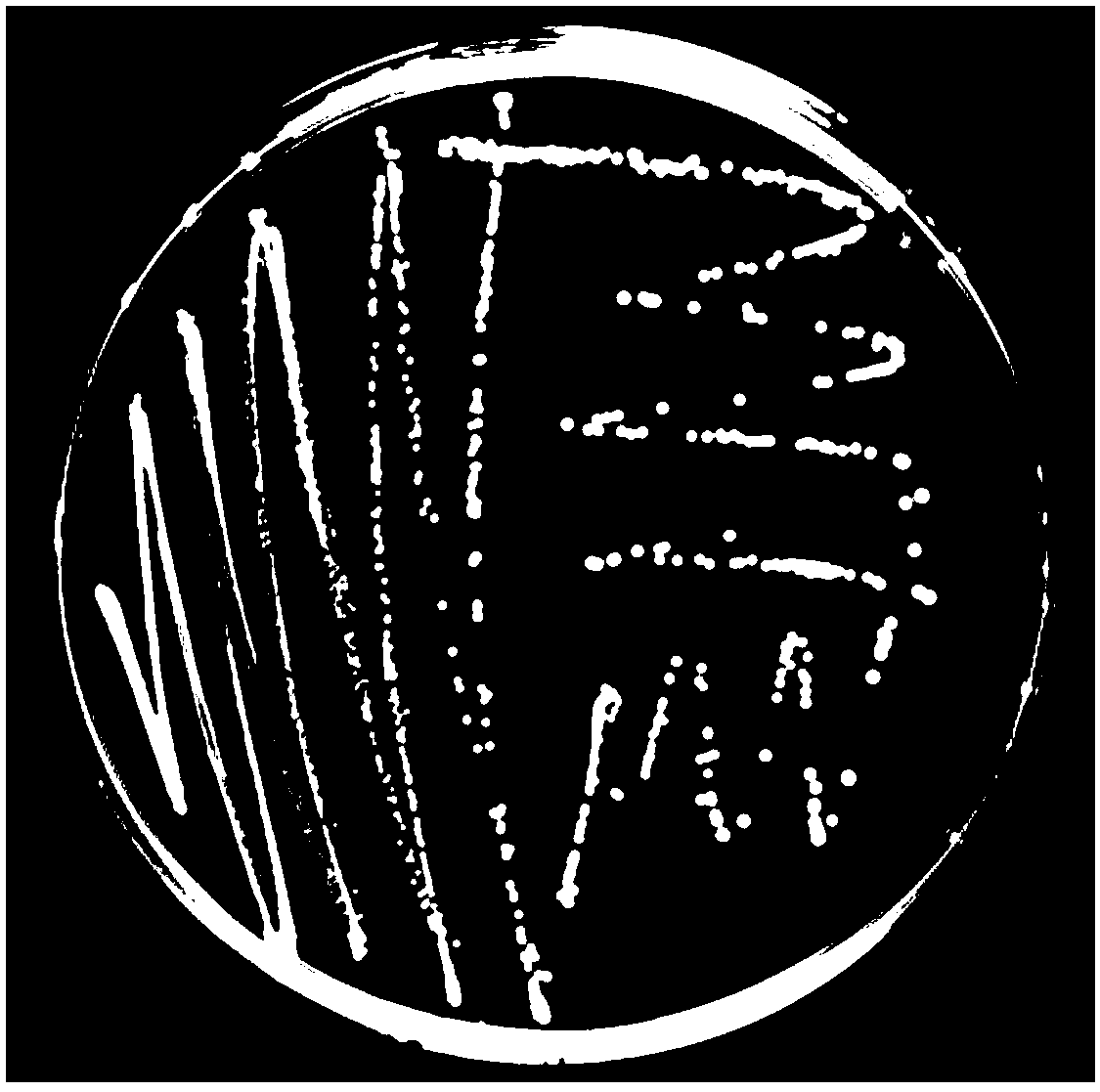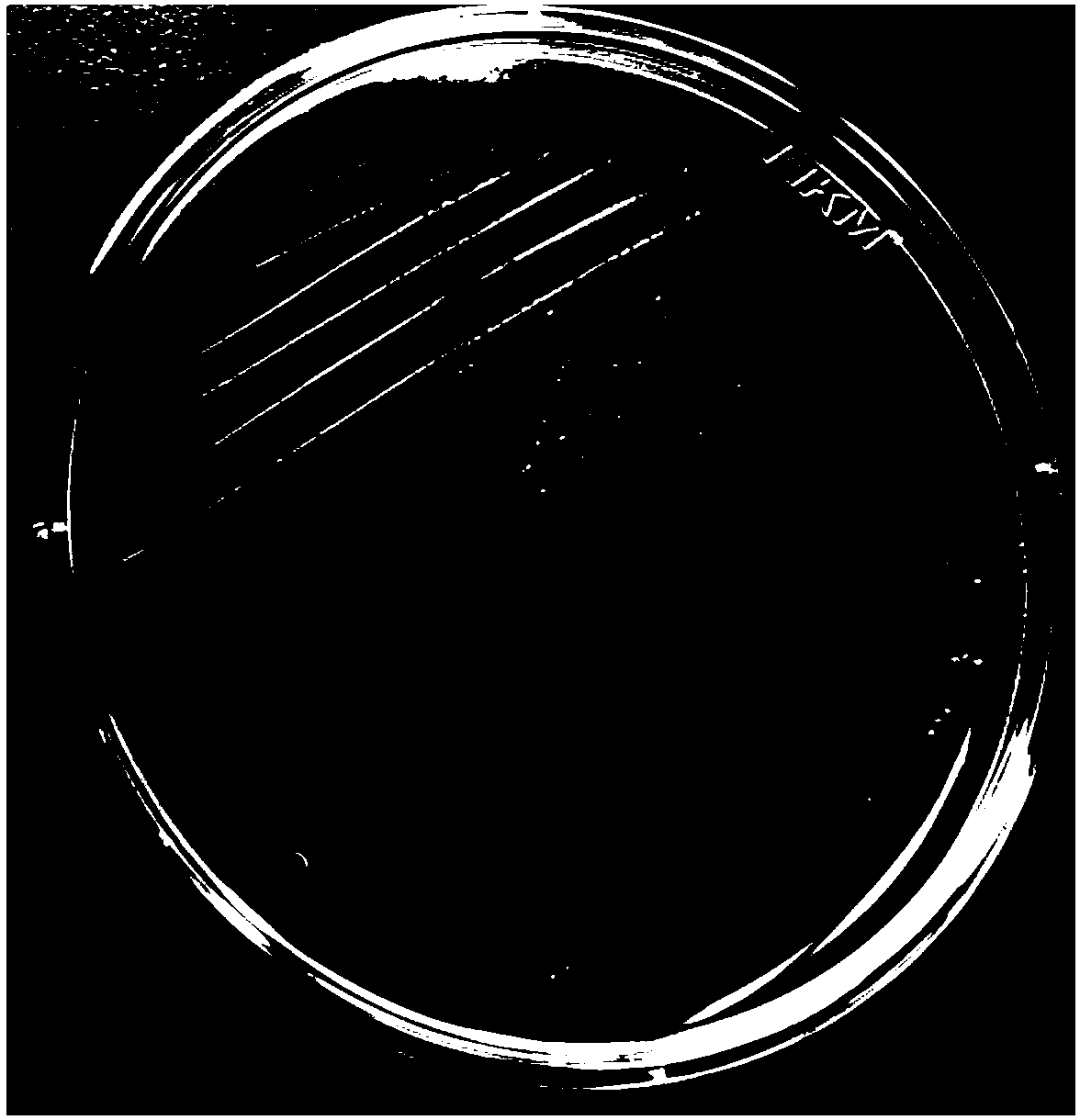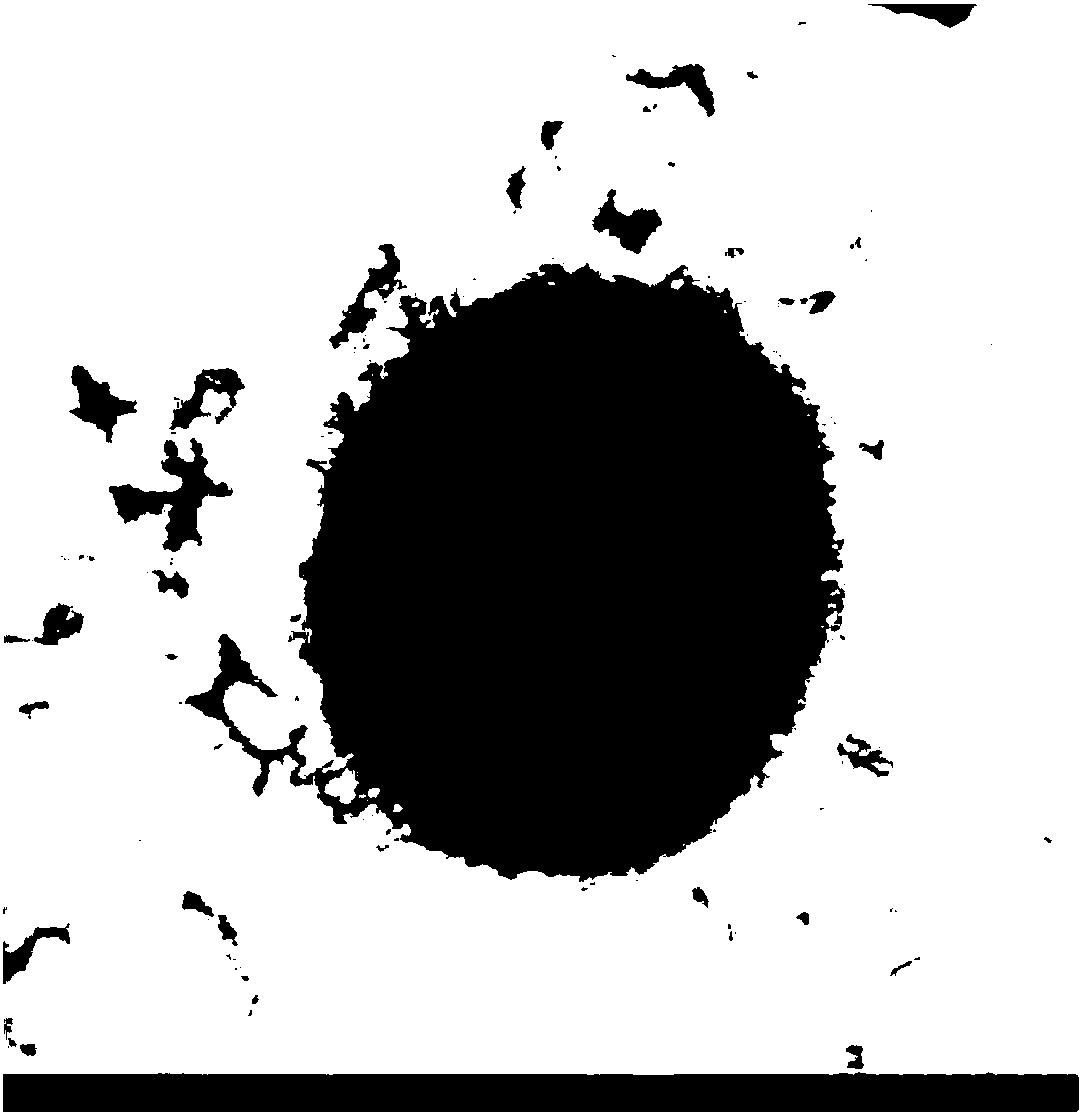Acyl-homoserine lactone degrading bacteria and application of acyl-homoserine lactone degrading bacteria in disease control
A strain and bacillus technology, applied in the field of acyl homoserine lactone degrading bacteria and its application in disease control, can solve the problems of acyl side chain length, saturation difference, etc.
- Summary
- Abstract
- Description
- Claims
- Application Information
AI Technical Summary
Problems solved by technology
Method used
Image
Examples
Embodiment 1
[0044] Isolation and screening of embodiment 1OdDHL degrading bacteria (Acinetobacter bacterial strain XJ-10)
[0045] 1. Isolation and screening of Acinetobacter strain XJ-10
[0046] (1) Soil sample collection: Soil samples collected from Xinjiang were used as microbial sources.
[0047] The soil samples were collected from the farmland of Xinjiang Province on October 9, 2014. They were sampled, bagged and preserved as microbial sources and brought back to the laboratory for isolation and screening of strains.
[0048] (2) Enrichment culture of bacterial strains: prepare basal salt medium (MSM), put 50mL of MSM medium in a 250mL Erlenmeyer flask, sterilize at 121°C for 15-25min, add OdDHL mother liquor (solvent Methanol), so that the final concentration of OdDHL is 5 μM, in addition to adding 5 g of soil samples, placed in 30 ° C, 200 rpm shaker for 7 days, and then transferred to MSM medium with OdDHL concentration of 10 μM according to 10% inoculum . After culturing for...
Embodiment 2
[0054] The identification of embodiment 2 Acinetobacter strain XJ-10
[0055] In this example, the morphological characteristics, physiological and biochemical characteristics and 16S rDNA phylogenetic analysis of the degrading bacteria XJ-10 were carried out, and the strain was identified as Acinetobacter schindleri. details as follows:
[0056] (1) Morphological characteristics of the colonies: After culturing on LB solid plates for 48 hours, the colonies are flat, with smooth and opaque surfaces and neat edges, such as figure 1 Shown; the bacterial colony appears beige on the blood plate, as figure 2 Shown; in LB liquid medium, it is diffuse and turbid, aerobic, and grows well at 30°C.
[0057] (2) Morphological characteristics of bacteria: such as image 3 As shown, the bacteria are rod-shaped, sometimes nearly spherical, with one polar flagella.
[0058] (3) Physiological and biochemical characteristics: the strain is Gram-negative bacteria, aerobic, positive in cont...
Embodiment 3
[0069] The antibiotic susceptibility analysis of embodiment 3 strain XJ-10
[0070] In order to better study the strain XJ-10, various antibiotic susceptibility tests were performed on the strain XJ-10 in this example.
[0071] Analysis of experimental results: such as Figure 5 As shown, the resistance of the strain XJ-10 to ampicillin reached 400 μg / mL and above, the resistance to kanamycin reached 200 μg / mL, the resistance to gentamicin reached 100 μg / mL, and the resistance to streptomycin The resistance to chloramphenicol and chloramphenicol reached 20 μg / mL. This result is helpful for selecting appropriate antibiotics as a reference in follow-up studies.
PUM
 Login to View More
Login to View More Abstract
Description
Claims
Application Information
 Login to View More
Login to View More - R&D Engineer
- R&D Manager
- IP Professional
- Industry Leading Data Capabilities
- Powerful AI technology
- Patent DNA Extraction
Browse by: Latest US Patents, China's latest patents, Technical Efficacy Thesaurus, Application Domain, Technology Topic, Popular Technical Reports.
© 2024 PatSnap. All rights reserved.Legal|Privacy policy|Modern Slavery Act Transparency Statement|Sitemap|About US| Contact US: help@patsnap.com










